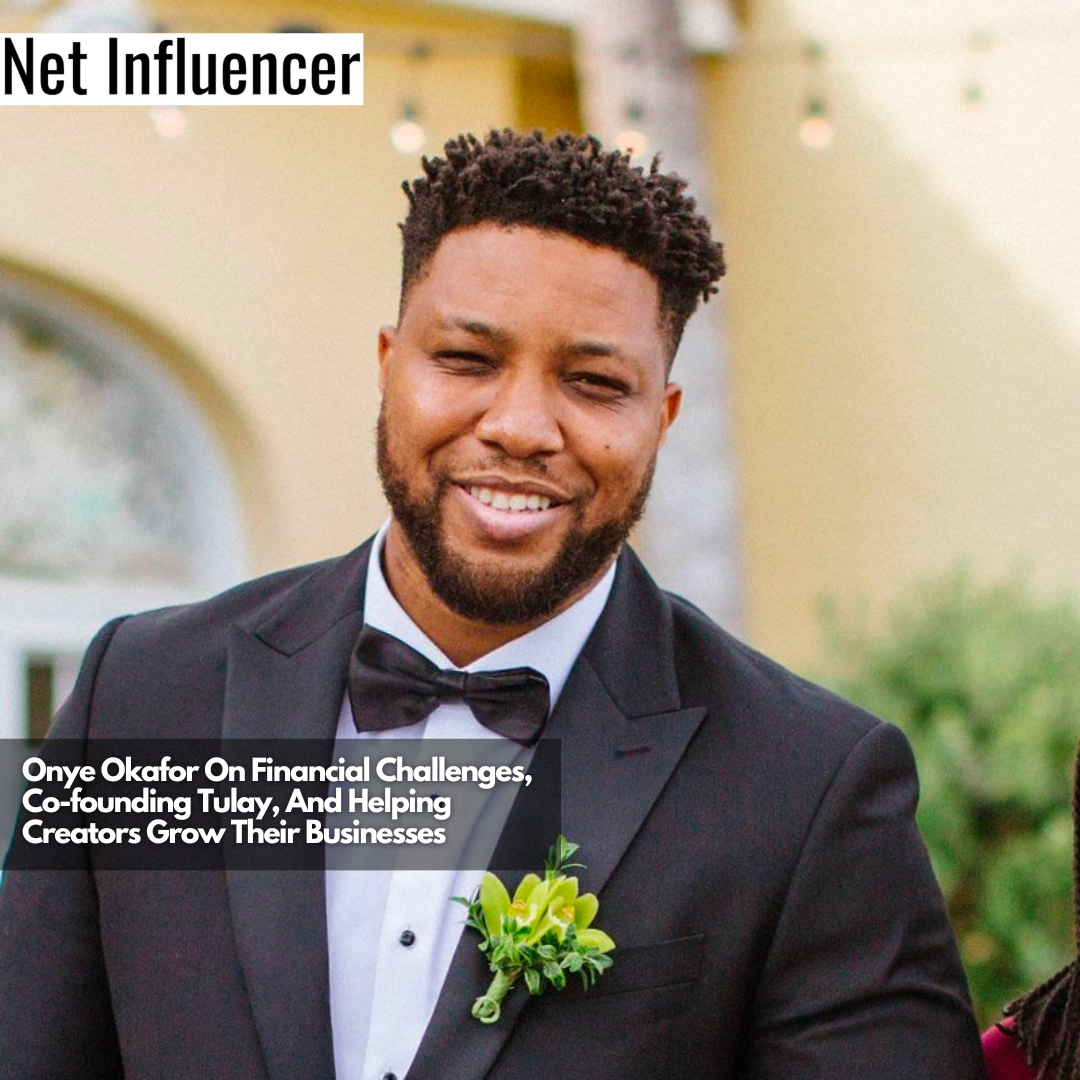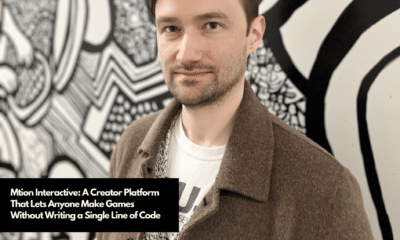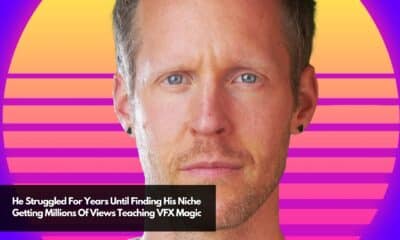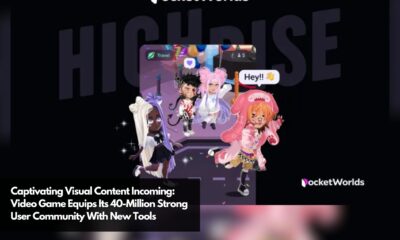Technology
Onye Okafor On Financial Challenges, Co-founding Tulay, And Helping Creators Grow Their Businesses
Onye Okafor had financial challenges growing up, but this didn’t stop him from succeeding. Instead, he used that experience to co-found Tulay. Today, he and his co-founders, are empowering emerging creators to earn more and struggle less.
Onye Okafor experienced financial hardships in his adulthood for reasons beyond his control, but this didn’t stop him from succeeding. Instead, he used that experience to co-found Tulay. Today, he and his co-founders, are empowering emerging creators to earn more and struggle less.
Through a virtual interview, Onye shares details about Tulay and how his team envisions it helping more content creators.
Who is Onye Okafor?
Onye Okafor is the President of Tulay, helping early-stage content creators build and grow strong businesses. His personal experience dealing with exclusive and predatory financial systems and firsthand experience in the content creation space led him to co-found Tulay.
Onye’s Inspiration for Forming Tulay
Onye and the other co-founders want to achieve one thing through Tulay: increase the diversity of voices that are monetizing on social media platforms.
The founders’ background inspired the team to form Tulay. He shares, “We are a diverse set of founders – all of us first-generation Americans. Alex (co-founder and CEO) and I share our roots in Nigeria. As for our other co-founder, Kai, his mother immigrated to the US from Trinidad. All three of us have struggled with accessing financial resources within the traditional credit and banking system in the US.”
Onye Okafor shares that the team had a lot of experience working with the creator economy. Tulay’s CEO, Alex Okafor, was a creator before the term became mainstream. He did a lot of user-generated content and commercials with celebrities like LeBron James and Kevin Durant.

Even when he was working with big names, Alex would get paid after 30, 60, or 90 days. He was playing basketball internationally during this time, so he didn’t necessarily need to get paid immediately. But Onye Okafor shares, “Although he would like to [get paid immediately] but a lot of the folks he was working with were getting paid on net 30, net 60 to 90 terms. And obviously, if you have bills to pay, if you have responsibilities, that makes it very difficult to manage.”
Fast forward, and Onye and his team started working on different initiatives to help content creators in the financial aspect. They’ve worked with content creators and paid them immediately. This surprised a lot of content creators because getting paid immediately wasn’t a norm in the industry.
This gave Onye Okafor and his team a business idea, so they started asking questions. They asked people in the content creation space how fast they get paid, and their answers shocked Onye’s team.
He shares, “We worked with maybe about 15 folks at that time, and about 90% of them said they typically were getting paid on net 30. The longest one said they’re getting paid on net 150, which is wild, right?”
The team went through this rabbit hole and started to research. They interviewed hundreds of creators and realized that delayed payments were consistent across virtually all creators they engaged with.
After seeing that creators get paid typically around net 30, net 40, all the way up to about net 120, Onye’s team started connecting with them. They realized that the creator economy was very much filling a nascent space — there were a lot of opportunities for money-making.
“We wanted to make sure that it was truly inclusive because we know, sometimes, the rewards don’t come immediately. But oftentimes, you need to invest energy. So, we wanted to, if possible, get rid of some of those financial challenges. That’s what inspired us to work on Tulay,” Onye shares.
What Makes Tulay Different
One thing that makes Tulay stand out is the experience of its founders. The team behind Tulay was all negatively affected by the traditional credit scoring system — whether that was not being able to purchase a car, get an apartment, or suffer the continued impact of delayed medical payments incurred while they were children.

Tulay is building with an equity-centric approach, with a focus on enabling marginalized folks to reach their full creative monetization potential. We do this by providing money-making opportunities, automating cumbersome tasks, giving access to unique data insights as well direct financing, and access to a creator community. Onye and the Tulay team believe that having this kind of focus allows them to essentially help everyone.
Onye explains further, “We are focusing on -90% of creators monetizing on social media part-time, where the opportunity, knowledge, and resource gap are preventing them from transitioning to full-time.”
How the Team Ensures Creators Will Use the Funding for Their Businesses
Onye Okafor shares, “Where we think we come in is by helping bridge those pay gaps, allowing content creators to focus on the things they do best, which is content creation. As a result, they’re able to make more content, essentially better content, which ultimately allows them to charge for more money.”
Tulay helps creators by funding them with startup and growth capital. Startup capital funds new creators to come up with content, while growth capital is for established creators who want to get more brand deals and grow their following.
How Tulay Addresses Challenges on Financial Inclusion and Access to Capital
Onye and his team quickly realized that marginalized creators were often those from different ethnic, socioeconomic, and gender-based backgrounds. This is reiterated in their customer interaction, where minority women are showing significant interest in working with Tulay.
Onye says, “There’s a huge pay gap here.. There could be two individuals who both look the same and have the same number of followers. But a woman, even with higher engagement rates, will most likely get paid less than a man. We see race-based monetization gap dynamics as well – at this point, all else being equal, the lighter your skin, the more you are earning.”
Tulay is working to solve this problem in two ways: by empowering creators through increased transparency and by increasing access to financial resources for creators.
Feedback Tulay Received From its Users
“We had a content creator who needed about $8,000 and couldn’t pay their rent. We were able to help fast-track that and allow them to pay their rent. As a result, they were able to get more deals,” Onye shares an experience a Tulay user has had.
Onye Okafor proudly mentions that one thing that sets Tulay apart is the team’s mindset toward content creators. Unlike other funding platforms, Onye and his team see creators as people first and understand their businesses.
Measuring the Success of Its Funding Initiatives
Onye adds, “I firmly believe that access to capital isn’t readily available, but access to Tulay is readily available. By opening up Tulay, these opportunities for folks to express themselves and to use their creative talent, to monetize and make a living for themselves, is a net positive for the world. But today, there are a lot of challenges that make it preventative, specifically in the creator economy.”
“And so our goal as a team is to make being a creator truly accessible to anyone regardless of race, gender, or socioeconomic status,” Onye states.
How the Content Creator Space Will Evolve
For Onye Okafor, the content creator space is still in its early innings, and a lot will change in the future. He expects new platforms and services will come out, as well as newer ways of becoming a creator.
He also mentioned that the content creator space would continue to grow as more and more people want to create content and become influencers. He explains, “There are also studies that show 45% of Gen Z folks actually want to be content creators. So, I think there will be a lot of new content creators coming through. I think it’s beautiful and amazing.”
As the content creator space evolves in the years to come, Tulay aims to continually achieve its goal. It’ll support content creators throughout the entire process, from creators who are still starting in the industry to creators who have become the biggest and brightest. In short, the team behind Tulay wants to grow with content creators throughout their journey as they go through different phases.
Tulay also wants to connect creators with larger credit agencies. Onye explains, “What’s going to differentiate us long-term is that we’re trying to create, what we believe is a social credit score. What this means is that we’ll be able to connect creators with bigger credit allocators who could help them build their businesses.”
“So when you think about wanting to build different verticals on your brand, whether that’s selling clothes, creating your own production company, or creating another agency that supports content creators, we think that is going to be really powerful,” Onye states.
Onye and his team recognize the struggles content creators face when it comes to securing capital from financial institutions. Usually, creators can’t easily go to a bank and gain access to capital because most credit allocators don’t know how to properly assess creators. And Tulay is going to solve that challenge.
What’s Next for Tulay
Tulay is a Techstars-backed company, and in the near term, they are focused on building for their growing community of emerging creators.
Onye Okafor adds, “And also, just support systems to ensure that folks are counting not only for the finances but also that they have a strong business. So whether that’s getting partnerships or best practices on working with agencies, we’re planning on supporting it in any way.”





















